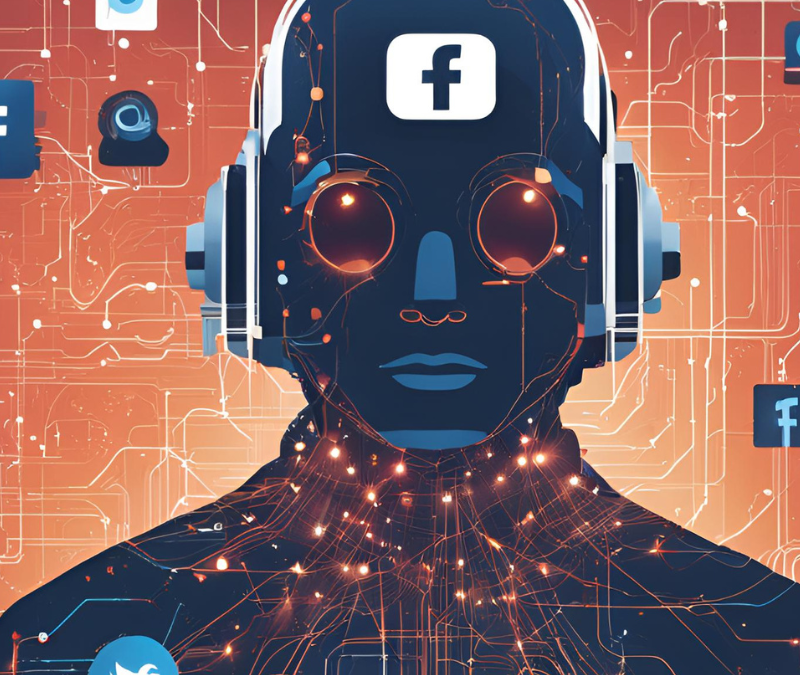Why Federal Agencies Should Harness The Power of Social Media and AI
In the early 2000s, a seismic shift occurred in the landscape of human communication. This shift, triggered by the advent of social media, began as a simple platform for connecting with friends and family. It has rapidly evolved into an assertive communication, information dissemination, and marketing tool. Now, with the integration of artificial intelligence (AI), we stand at the cusp of another transformative era in digital communication and public engagement.
Imagine a world where boundaries are blurred, voices from all corners of the globe are heard, and information flows freely and instantly. Social media has created this revolution, and AI is set to amplify its impact exponentially. Platforms like Facebook, Twitter, Instagram, and LinkedIn have become integral to our daily lives. They have transformed how we share and consume information, engage with each other, and perceive the world around us. AI-powered algorithms now curate our feeds, personalize our experiences, and generate content, further revolutionizing these platforms.
Social media has been a game-changer in marketing, democratizing the landscape and allowing businesses of all sizes to reach their target audience directly and engage with them meaningfully. AI has taken this further, enabling hyper-personalization, predictive analytics, and automated customer service. Marketers can better understand their audience, tailor their strategies with unprecedented precision, and measure their success in real time. The synergy of social media and AI has made marketing more interactive, personalized, and data-driven than ever before.
The potential of social media and AI is equally immense for federal agencies.
Social media offers a direct line of communication to the public, allowing agencies to disseminate information quickly and efficiently. AI-powered chatbots and virtual assistants can provide 24/7 support, answering queries and guiding citizens through complex processes. Machine learning algorithms can analyze vast amounts of social media data to identify trends, sentiments, and emerging issues, enabling agencies to be more proactive and responsive to public needs.
Imagine a government that listens, engages, and understands—a transparent, accountable, and responsive government. This is the potential of social media and AI for federal agencies. It offers an unprecedented opportunity to connect with the public, be more transparent and accountable, and deliver better public services through data-driven decision-making and personalized interactions.
Today, most federal agencies have a presence on social media, recognizing its potential as a tool for communication and public engagement.
However, the extent and effectiveness of their social media use vary significantly. Some agencies use it primarily as a one-way communication tool, posting updates and announcements but failing to engage with their audience entirely. Others have embraced the interactive nature of social media, using it to engage with the public, solicit feedback, and even provide customer service. The integration of AI in these strategies is still in its early stages but shows immense promise.
One federal agency that has effectively harnessed the power of social media is the U.S. Department of the Interior. Through stunning visuals and engaging content, they’ve managed to attract millions of followers on Instagram. Their profile showcases the beauty of America’s public lands and fosters a sense of appreciation and stewardship. Their success lies in their ability to tell compelling stories through visuals, engage with their followers, and align their social media strategy with their mission. Integrating AI could enhance their efforts through image recognition to automatically tag and categorize photos or predictive analytics to optimize posting times and content themes.
Another agency that has leveraged social media effectively is the Centers for Disease Control and Prevention (CDC). During the COVID-19 pandemic, the CDC used social media to disseminate critical information, provide updates, and debunk myths. Their straightforward, concise, and accessible language made complex health information understandable to the general public. This demonstrates the power of social media in crisis communication. AI could augment these efforts through natural language processing to monitor and respond to misinformation in real-time or through predictive modeling to anticipate and prepare for public concerns.
Strategies to Adopt
Federal agencies must adopt strategic, creative, and data-driven approaches to harness the full potential of social media and AI. Here are key strategies to consider:
1. Understand the audience: Conduct thorough market research to identify key demographics, interests, and preferred social media platforms. Use AI-powered analytics tools to gain deeper insights into audience behavior and preferences.
2. Create engaging content: Develop informative, inspiring, and thought-provoking content that resonates with the target audience. Leverage AI-generated content and predictive analytics to optimize engagement.
3. Foster dialogue: Encourage interaction through polls, quizzes, and open-ended questions. Implement AI-powered chatbots to provide instant responses and gather valuable feedback.
4. Manage feedback effectively: Monitor interactions, respond promptly to queries, and address concerns transparently. Use sentiment analysis AI to gauge public opinion and identify emerging issues.
5. Stay adaptable: Regularly review social media performance and be ready to pivot strategies as needed. Utilize machine learning algorithms to predict trends and adapt content strategies proactively.
6. Ensure internal collaboration: Foster communication between departments to maintain a unified message. Use AI-powered project management tools to streamline cooperation and ensure consistency across platforms.
7. Prioritize data privacy and security: As federal agencies handle sensitive information, it’s crucial to implement robust data protection measures and ensure compliance with relevant regulations.
8. Invest in AI education: Train staff on AI technologies and their applications in social media marketing to maximize the potential of these tools.
Enhanced by AI, social media offers federal agencies a powerful platform to connect with the public, build their brand, and foster trust.
Therefore, By adopting the right approach and leveraging cutting-edge technologies, agencies can transform their digital presence and significantly improve public engagement and service delivery. Remember, a deep understanding of the audience and a commitment to serving their needs is at the heart of every successful social media and AI strategy. As we move into this digital age, the agencies that embrace these technologies most effectively will be best positioned. AI will help them to fulfill their missions and serve the public interest in the 21st century and beyond.


